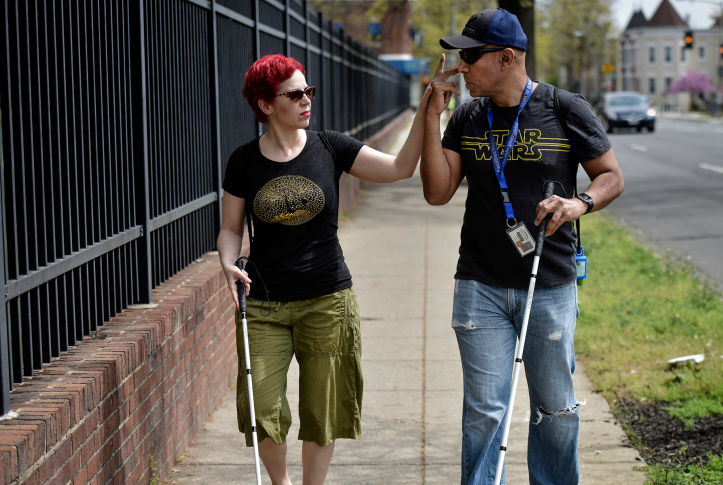Working-age adults (i.e., those ages 18–64) with disabilities account for a large portion of U.S. health care spending. People in this group have a wide array of disabilities and unique and often unmet needs for long-term services and supports (LTSS). These services are often needed to help with daily activities, such as bathing, preparing meals, and managing medication.
Federal and state policymakers lack critical data on the need for LTSS, particularly for those who are not yet receiving services (i.e., people with needs but who are not yet connected to services or not yet eligible — either financially or functionally –—but will be soon). Available data are fragmented and incomplete or limited to other subgroups (e.g., people older than 65 or those dually eligible for Medicare and Medicaid). The need for complete data is critical as the demand for LTSS is expected to grow in the next two decades. Federal and state governments will need data as they work to identify and meet these needs, manage budgets, and help people with disabilities to live, work, and thrive in community settings.
State-Level Data Collection Pilots
The Long-Term Quality Alliance, in partnership with Brandeis University, is working to fill the data void. We added supplemental questions on LTSS need and services to the Behavioral Risk Factor Surveillance System (BRFSS) — a national survey administered by states — in Washington State and Texas. Adding these questions allowed us to estimate statewide prevalence of disability and need (both met and unmet) for LTSS, among other issues. In Washington State, we tested combining the new data we collected with the state’s claims and assessment data to better understand the current population receiving services and the population who may need services in the future.
Three key takeaways emerged from these pilots:
- The BRFSS is an effective vehicle for collecting data on LTSS needs of working-age adults with disabilities.1 Adding supplemental questions to the BRFSS allowed us to measure the scope of LTSS need in total state populations and assess how well current services were reaching and meeting needs. For example, in Washington State, we found that 22 percent of residents ages 18 to 64 and living in the community reported having a disability. Of this group, about one-third (6.7% of the total 18-to-64 population) reported needing LTSS to help with self-care or independent living. Of the group with LTSS needs, nearly 40 percent reported they were receiving insufficient help or no help. We found a similar rate in Texas.
- The full BRFSS dataset provides rich descriptive information on working-age adults with disabilities. By adding only a few questions, policymakers can gain a wealth of useful information about the population. Given the richness of the BRFSS data, we were able to explore demographic and health-related characteristics of the population, as well as their needs and circumstances. For instance, a significant portion of working-age adults with disabilities in Texas were employed but had low incomes.2 In Washington State, we found that the Hispanic population has higher rates of disability but low rates of LTSS need. Based on our analysis of the state’s administrative data, the Hispanic population also had a higher-than-average rate of enrollment in Medicare and Medicaid but substantially lower rates of receipt of LTSS, which could be attributed to lower LTSS need or barriers to access. The Asian population has very low rates of disability, enrollment in Medicare and Medicaid, and unmet need for LTSS. These unique patterns raised questions about the reasons certain groups have lower rates of LTSS need and use. A wealth of information can be mined from the dataset on health conditions, status, and behaviors to inform program design and implementation.
- States can combine other data with BRFSS data to describe current and future LTSS needs and service use of working-age adults with disabilities. States have substantial information on current Medicaid LTSS recipients through their claims and assessment data, which can be linked with BRFSS data to build a framework for examining LTSS need, unmet need, and service use that states can use for program planning. States also can purchase Medicare claims data to link with their Medicaid files to get an enhanced view of their Medicare and Medicaid population. Washington State used a combination of Medicare, Medicaid, and BRFSS data to analyze the population using LTSS and to develop a model to estimate the size and characteristics of the population needing LTSS in the future to plan and build infrastructure to meet those needs. This analysis projected that among working-age adults with Medicare and/or Medicaid coverage, 4 percent are currently receiving LTSS, and another 2 percent are estimated to be at high risk of needing LTSS in the near future.
Role of Federal and State Policymakers
Building on the evidence from these state pilots, the federal government and states can take steps to scale data collection across states.
- The federal government can sponsor and provide funding for a national BRFSS module on LTSS. The module would be a standard set of validated questions that states could elect to add to their state’s BRFSS. States that add these questions could share their results to help develop a national understanding of LTSS needs.
- States can begin to develop their internal capacity for analyzing LTSS needs to support state planning to meet those needs. Activities would include adding LTSS questions to their state’s BRFSS, purchasing Medicare claims data to link with their Medicaid files, and developing a predictive model for their population.
These steps will help to provide improved data on the current and projected demand for LTSS among working-age adults with disabilities. Policymakers urgently need these data to plan for and invest in supporting this high-need population.





